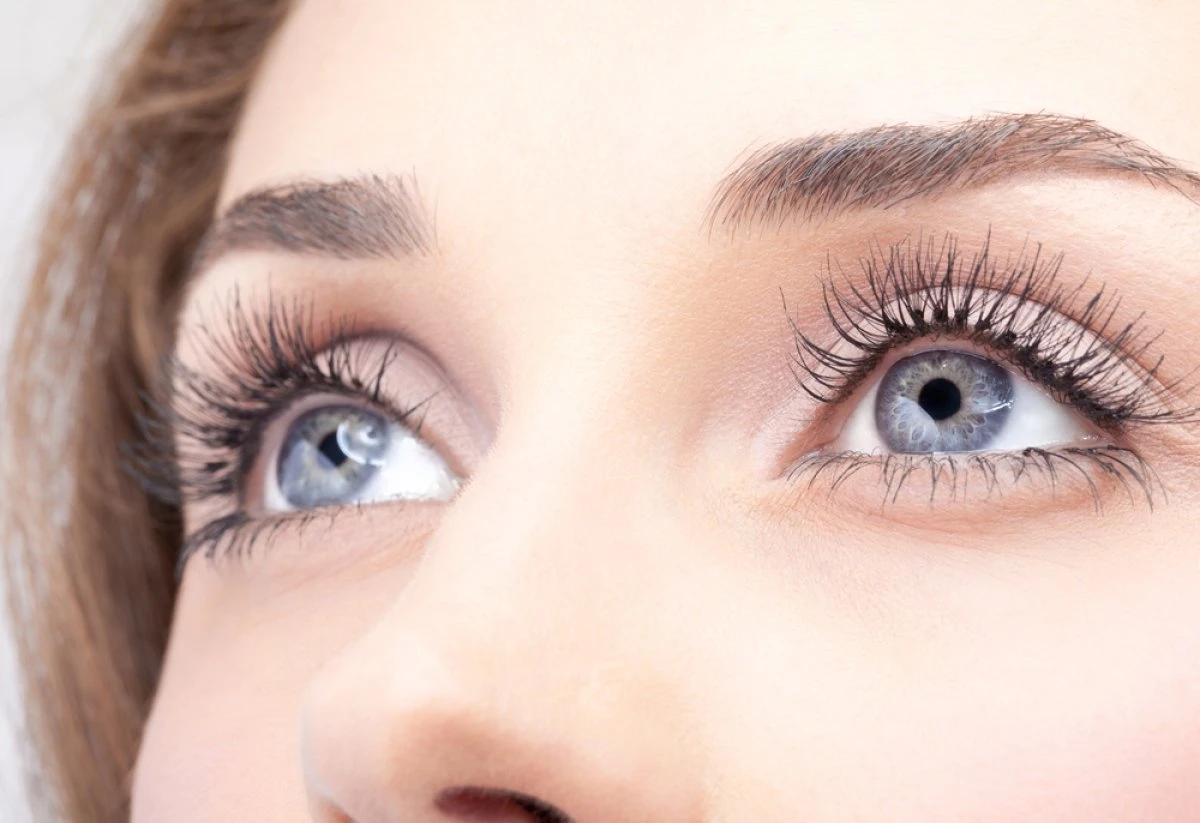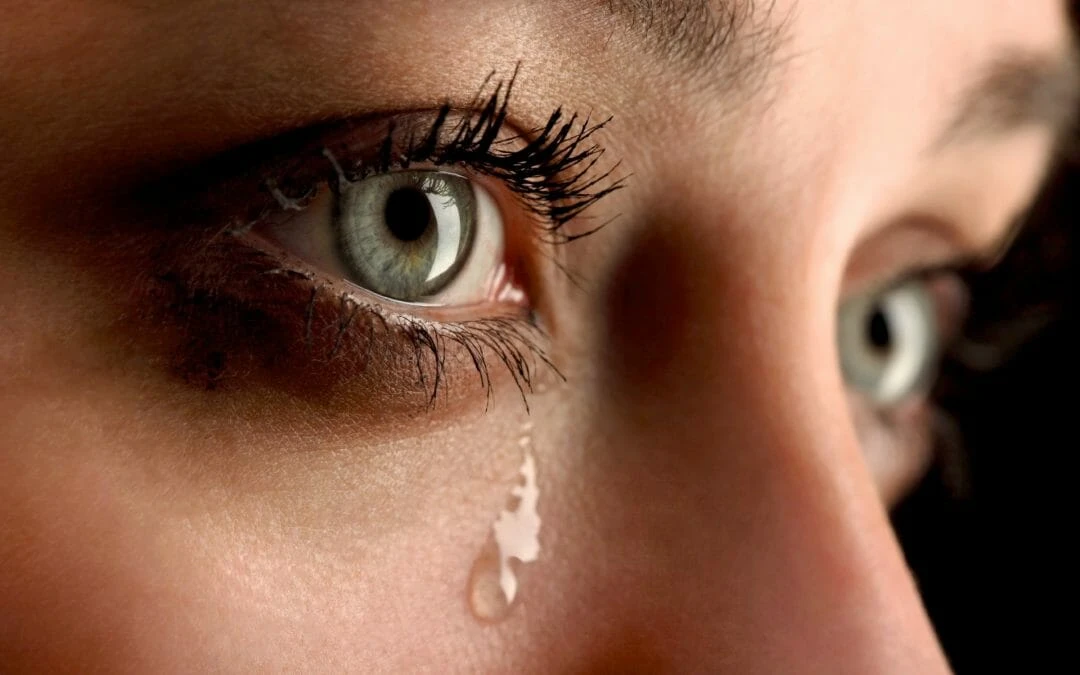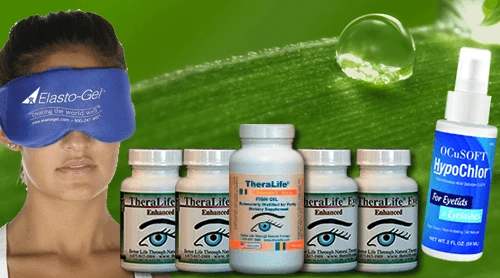What are your watery eyes symptoms?
You have tears running down your cheeks all day long; they sting, you tried all kinds of watery eyes treatments such as eye drops, eye gels, Restasis, Xiidra, nothing works.
Your eyes water so much you cannot see well to drive. Does that sound familiar?
In this blog, we will discuss what causes watery eyes, including dry eyes, allergies, and clogged tear ducts.
Why Dry Eyes Cause Watery Eyes
As paradoxical as it may sound. Dry eyes can be the reason why the eyes water uncontrollably (1). The following mechanism is behind it: If the moisture in the eye is too low, the eye tries to compensate for this shortcoming and increasingly produces tear fluid.
The result is overflowing eyes. This overflowing tear is called Reflex Tear. You have no control over reflux tears, therefore, making your watery eyes uncontrollable.
Watery Eyes Are Troublesome
Watery eyes (teardrops, epiphora) are troublesome and a common symptom. When tears run down your cheeks, there can be many reasons – in addition to sadness and joy.
Excessive watering of the eyes is often an age-related disorder of the tear apparatus or caused by allergies.
Tears are an expression of sadness or joy, but they are also a necessary protective shield for sensitive eyes. With every blink of the eye, the eye moistens itself with fresh tear fluid.
This tear film continuously supplies the eye with oxygen and nutrients, protects the eye from dehydration, and also serves as a “lubricant.”
What Factors Cause Watery Eyes
“Evaporative Dry Eyes” – Dry eyes happen when your tear evaporates too quickly. In other words, tear not thick enough to coat your eyeball.
“Environmental Factors” – Such as air conditioners, contact lenses, or intensive computer work all make dry eye symptoms worse.
The eye usually blinks every five to ten seconds to prevent it from drying out. When people are at the computer, for example, they often forget to blink because of sheer concentration.
The friction from eyes not being lubricated with tears results in inflammation(2). This inflammation intern causes tear production cells to shut down. Inflammation is a natural body function to protect itself. The result is less tear production, and you have dry eyes.
What type of tear is involved in watery dry eyes?
There are three types of tears:
1. Basal Tears – the healthy balanced tears which lubricate your eyes. Making eyes comfortable. It contains proteins, enzymes to kill bacteria, plus mucin, lipids, and more to protect your eyes.
2. Reflux Tears – happens when your eyes are irritated. Reflex tears wash away irritants. You have no control over Reflux tears. Your brain initiates the production of reflex tears. It will stop when the irritation is gone.
3. Emotional Tears – produced when you are sad. This type of tears contains more proteins and hormones.
The reflux tear is involved in a watery dry eye. The irritation from your dry eye resulted in reflux tears trying to wash away the irritant. This type of reflux tear is thin, evaporates quickly, and removes away the mucin, proteins, lipids that your eyes produce to thicken tears.
So why are your eye doctors giving up on you. They give you eye drops, eye gels, and nothing is working. They even tell you, “You just have to live with it.”
How To Successfully Treat Watery Dry Eyes?
Eye drops don’t work for dry eyes. Oral dry eye treatment that restores normal tear function works to stop tear over production. See more discussion below.
Causes of Watery Eyes
There are many reasons for watery eyes: Many hours of work on the screen, blinding sun or sadness. However, injuries and illnesses can also lead to increased tear flow (3).
Here are some of the causes of watery eyes and what treatment helps:
Watery eyes due to conjunctivitis
When the eyes start to water, they are usually overexcited. Triggers can be dust, sunlight, and cold, but also dry heating and air. In some cases, inflammation of the conjunctiva is also to blame for the tears. Then the eye is very red, itchy, and painful.
Many sufferers report a feeling of a foreign body; especially in the morning after getting up, the inflamed eye is often sticky. Allergies, viruses, and bacteria are often the reason for the inflammation. Since this can quickly worsen and is also contagious, those affected should see an eye doctor as soon as possible.
Allergies cause tear problems (2)
Many allergy sufferers complain of itchy, watery eyes. The symptoms are particularly bad in spring or summer when pollen flies through the area. But other allergens such as animal hair, mold, or dust mites can also trigger allergic reactions in the eye.
Some environmental substances can cause allergic reactions in the eye. If the eyes water due to an allergy, doctors speak of allergic conjunctivitis. In contrast to an infectious inflammation, the allergic variant usually occurs in both eyes. An allergic runny nose accompanies it.
Dry eyes can tear
Even if it sounds paradoxical at first: Dry eyes can be the reason why the eyes water more often. The following mechanism is behind it: If the moisture in the eye is too low, the eye tries to compensate for this shortcoming and increasingly produces tear fluid.
The result is overflowing eyes. Eye doctors tend to prescribe eye drops or ointments. But this does not work for watery eyes.
The environment can cause watery eyes
Air conditioners, contact lenses, or intensive VDU work to contribute to the fact that the symptoms worsen when the eyes are dry. The eye usually blinks every five to ten seconds to prevent it from drying out.
When people are at the computer, however, they often forget to blink because of sheer concentration. The eye then reacts with increased tear production.
Usually, this symptom does not appear until after work, when the eye slowly comes to rest. Therefore, be careful to keep blinking and drinking enough. If you have difficulty working on the computer, you can also use moisturizing eye drops. However, these should be without preservatives.
Ametropia strains eyes can cause watery eyes.
Ametropia that is not corrected correctly or incorrectly adjusted glasses can cause watery eyes. In these cases, increased lacrimation is a response to overwork.
To optimal visual performance, the eye must have tear film to cleans the surface of the eye and supply the cornea with oxygen and nutrients. The mucin layer, which gives the tear fluid a hold, lies directly on the surface of the cornea.
The aqueous layer is on top of it, and the fat-containing layer (lipid layer) is on top of it. It prevents the tear fluid from evaporating and the lid from sliding over the eyeball and not rubbing against it.
If the composition of the individual components is disturbed, this can either lead to the tear fluid no longer adhering to the eye as well. The eyes then become dry and start to water.
Watery eyes due to eyelid misalignment
For the eyes to stay moist, it is not just a question of the correct amount and the composition of the tear fluid. The lid must also be intact. Eyes blink to coat the conjunctive and cornea with tears.
This mechanism can be disturbed by eyelid misalignment. The eye is then no longer adequately wetted. Then the tears run. Affected people often complain of a foreign body sensation or sensitivity to light.
Doctors distinguish, among other things, between the inward and outward rotation of the eyelid and drooping eyelids. The causes can be hereditary factors, but also injuries or muscle problems. Then often, only surgery helps.
Clogged tear duct “overflows”; the eye
Infections and injuries can also cause the tear ducts to become clogged.(3) Doctors then speak of a stenosis of the tear ducts. Then the eyes can tear, stick, ignite, and hurt. In some cases, surgery can clear the lacrimal duct.
Here are some other causes of brief watery eyes:
· Yawning: The tear glands empty due to the stretching of the eyelids.
· Robust laugh: It also leads to the activation of the tear glands.
· Dust and foreign objects in the eye: These irritate the conjunctiva.
· Eyelashes turned that rub against the eyeball inwards.
· An age-related narrowing of the tear ducts.
Your Complete Watery Eye Treatment-TheraLife
TheraLife Eye oral formula aims to help you produce healthy tears for dry eye relief, without the use of eye drops. Theralife Eye formula also contains ingredients to combat allergies – one of the contributing factors in watery eyes.
With both significant causes of watery dry eyes covered, you can have the ultimate confidence in complete recovery.
To learn more, click here
If the symptoms do not go away, and the eyes continue to water, consult an eye doctor. He or she determines where the causes are and what possible diseases are based. On this basis, targeted treatment can begin.




